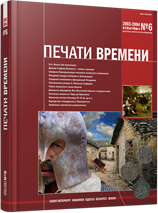Денежное обращение в Галицкой Руси в XIV-XV вв.
Monetary Circulation in Galitian Rus’ in 14-15 Centuries
Author(s): A. L. KryzhanivskiSubject(s): History, Archaeology, Middle Ages, 13th to 14th Centuries, 15th Century
Published by: Издательский дом Stratum, Университет «Высшая антропологическая школа»
Summary/Abstract: Galitian Rus’ in 14 c. had a well-functioning monetary system. The Lvov mints in 1353-1394 while emitting silver groszes always followed the same proportions of pure silver contents (2:1) to the Prague grosz. In 1353 – 1382 Lvov mints emitted Galitian-Russian denarii as well, 60 pieces (or kopa) of which equaled the purchase power of one silver Galitian-Russian grosz. With the beginning of emission in Krakow in 1394 of crown semi-groszes, with lower foot compared to the Czech coins, the contents of silver in the Galitian-Russian grosz changed. Metrological calculations of silver content in groszes produced in Lvov in 1395-1399, as well as in Lvov semi-groszes minted in 1399-1408 show that, starting with 1395, every exchange of the local currency into the Prague grosz fixed an additional payment („additio”) of 20% to the Lvov coins. Quite unexpectedly, truncated Prague groszes of Waclaw II, Ian I of Luxemburg and Carl IV were massively present on Galitian markets in 14-15 centuries.
Journal: Stratum plus. Археология и культурная антропология
- Issue Year: 2004
- Issue No: 6
- Page Range: 414-424
- Page Count: 11
- Language: Russian
- Content File-PDF

